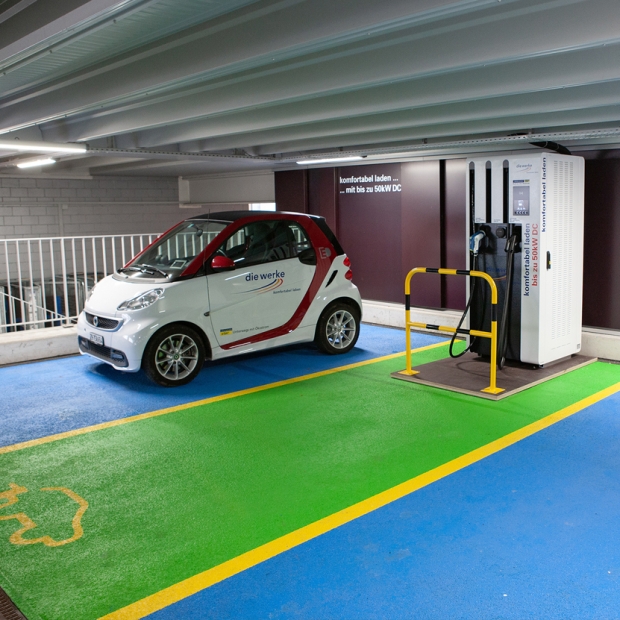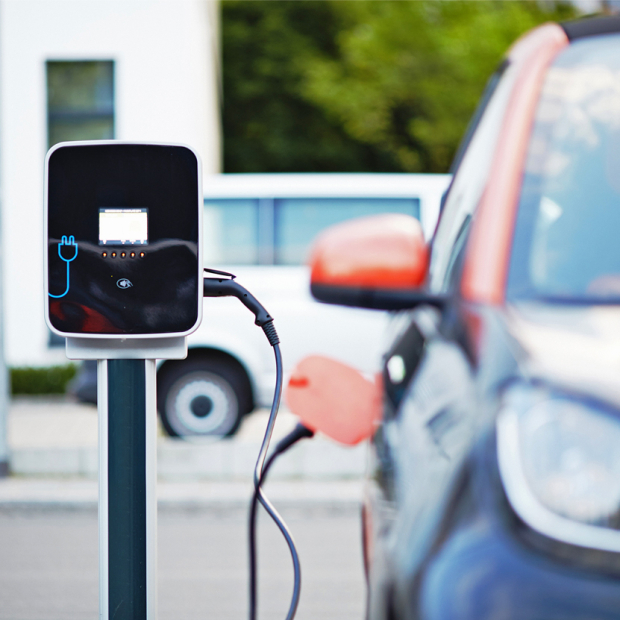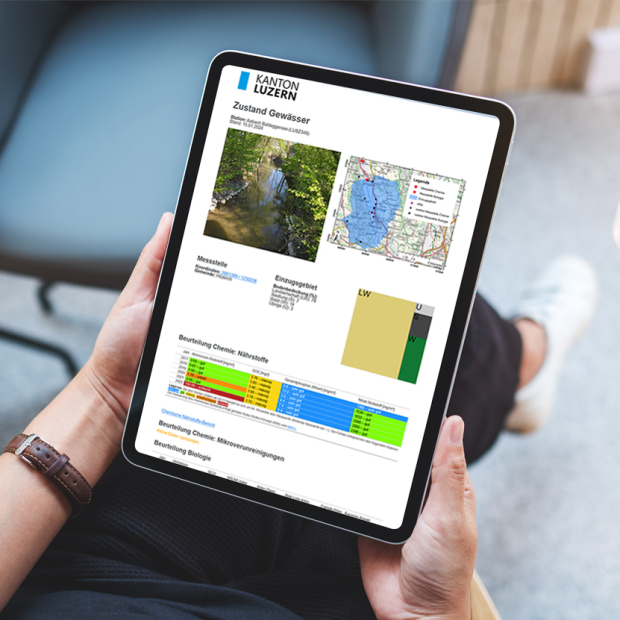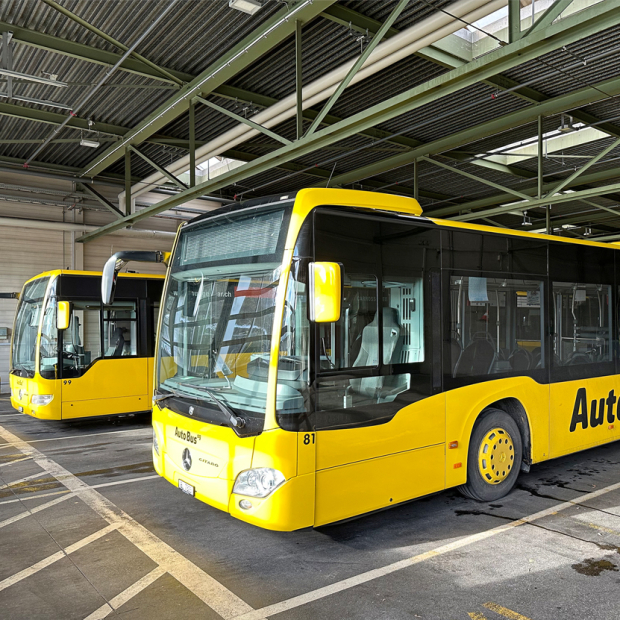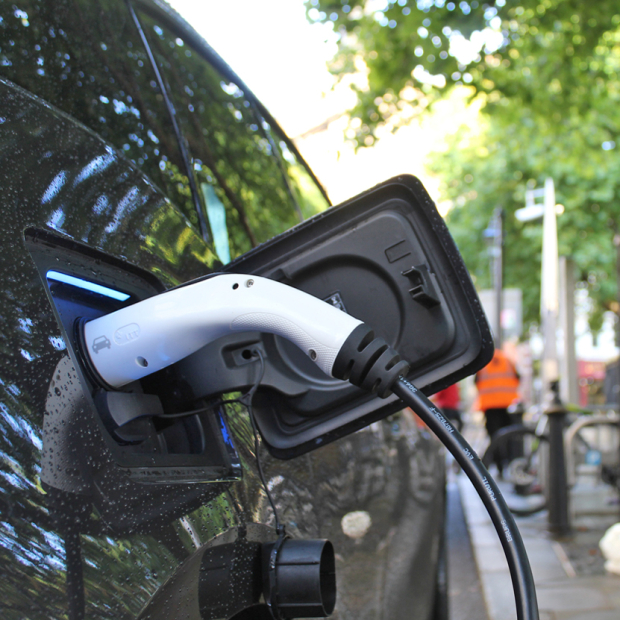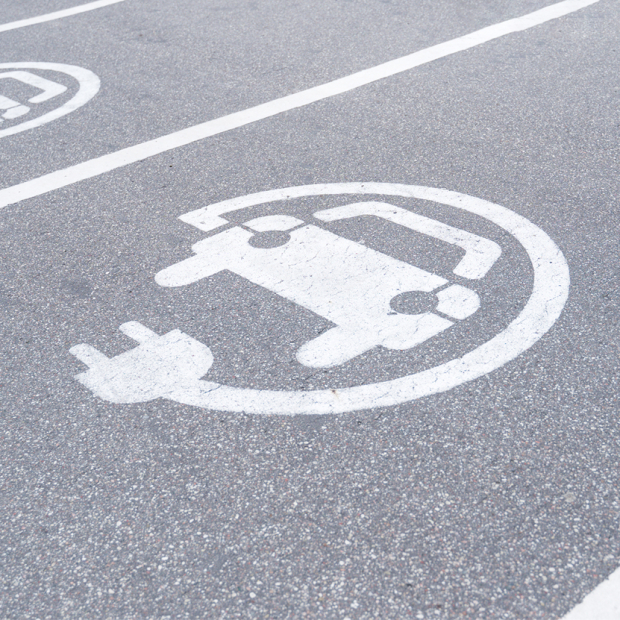

Preparing for a large-scale market shift toward electric vehicles
The demand for electric vehicle charging stations in the city of Lucerne is expected to grow significantly in the coming years. Indeed, the development and operation of the necessary charging infrastructure, including a significant expansion in the capacity of the power grid, represent both a major business opportunity and challenge for the Lucerne Power and Water Company (ewl). To prepare for the anticipated market shift toward electric vehicles, ewl commissioned EBP to work out a planning basis for an appropriate market and grid-development strategy.
Driven by high population density, economic vitality and an existing charging infrastructure, the shift towards electric vehicles is taking place at a faster rate in urban areas than in rural areas. This has also disproportionately increased the demand for charging infrastructure, including publicly-accessible charging stations, in urban areas. Working in the capacity of a consultant, EBP’s main goal was to provide ewl with a reliable quantitative basis for the development of a network of private and public charging stations and a corresponding expansion of its power grid.
Economic potential and charging-station capacity
EBP worked out estimates of the anticipated number of charging operations and total power demand associated with a new network of public and private charging stations over the next several years. Gathered for 25 city districts defined by ewl, the data used as a basis for the estimates project up to the year 2035. EBP also forecast the economic potential associated with the public charging infrastructure (including fast-charging units) for each city district, and assessed the demand for charging equipment at private residences and public and private companies. Using highly granular charging profiles for various charging-station types, EBP calculated the maximum power needs for electric vehicles in each city district. This information was used to assist grid planning (e. g. when determining whether medium-voltage networks would offer sufficient capacity and when it would be appropriate to introduce measures to avert grid overloads).
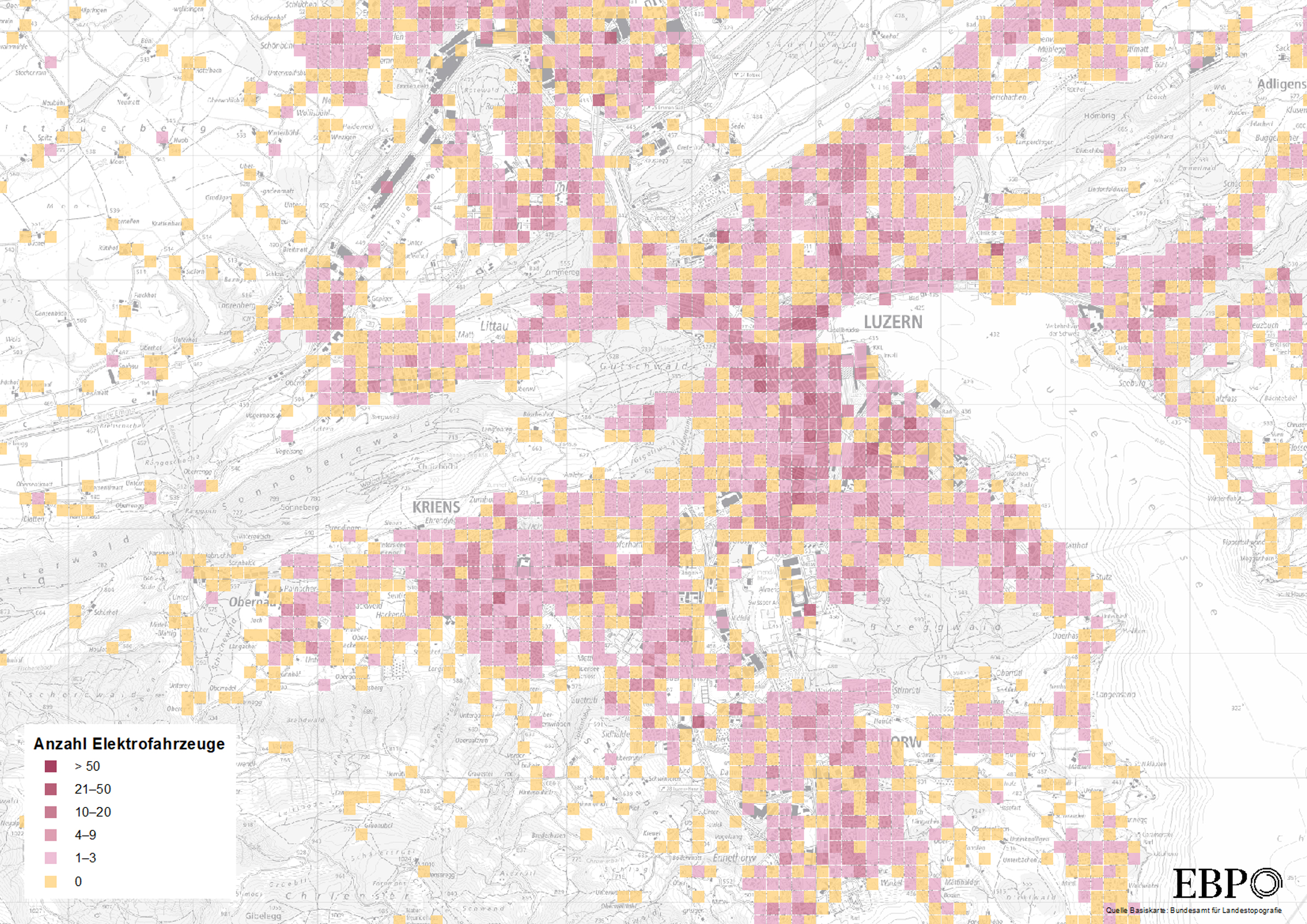
Targeted method use
Using three scenarios for the development of electric-vehicle sales in Switzerland, as well as our Swiss population tool (synPop), which offers a precise representation of the Swiss population, we assigned newly registered electric vehicles (BEV+PHEV) to households and enterprises. Together with ewl, we then assessed future charging behavior for various types of electric vehicle users. In order to quantify the impact of further agglomeration on electric-vehicle charging demand in the ewl grid, we modeled the flow of electric vehicles entering and exiting the grid region.
EBP evaluated numerous points of interest and analyzed the data for available parking zones and garages. In addition to this, we considered the existing charging infrastructure. This enabled us to draft highly granular forecasts of charging capacity and demand for additional public and private charging infrastructure in the city of Lucerne and its surrounding municipalities.
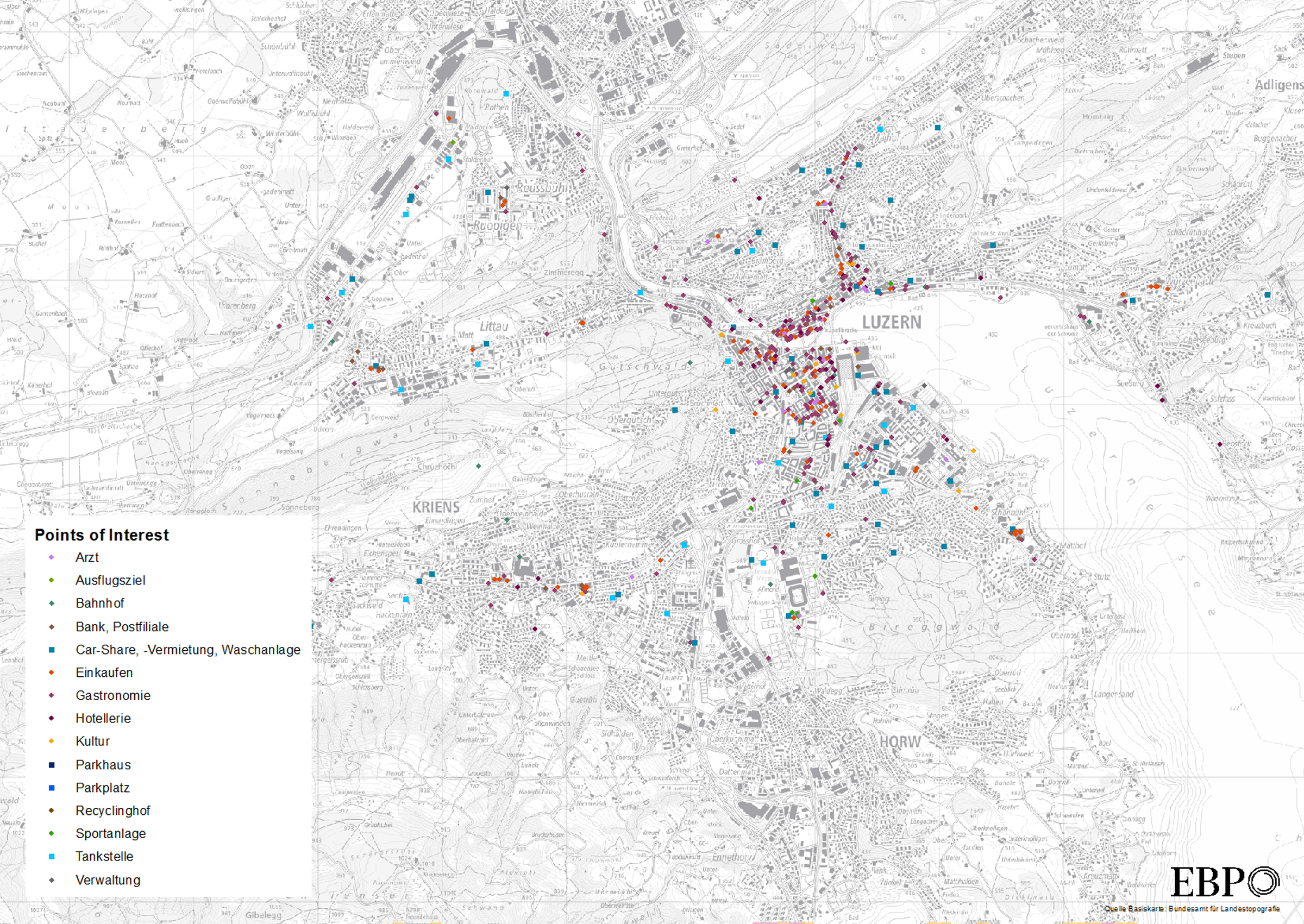
Consequences of electric-vehicle charging for the power grid
Using aggregated charging profiles, EBP was able to quantify the consequences that electric-vehicle charging is likely to have for the power grid. The charging profiles were generated based on the numbers of individual charging operations, typical arrival times, charging-station capacities and vehicle uptake capacities. This allowed us to ascertain area-specific, simultaneous-demand factors at grid level 4 (substations) of the sort that are used in grid-simulation assessments and stress tests.
The results were visualized in the form of numerous maps and integrated into the ewl GIS (File Geodatabase).


